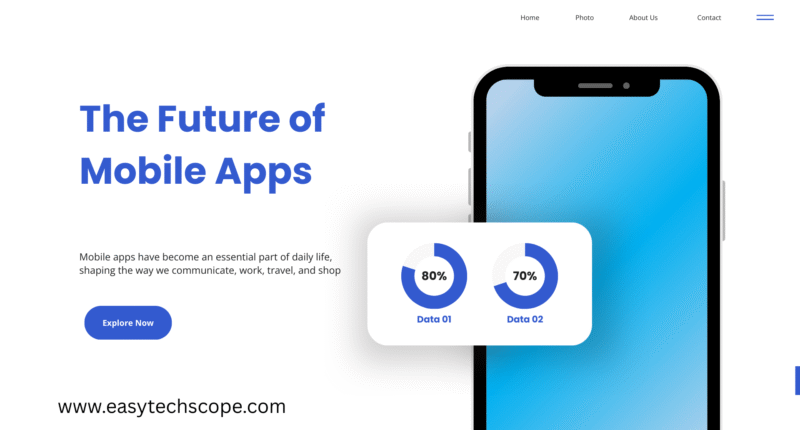Mobile apps have become an essential part of daily life, shaping the way we communicate, work, travel, and shop. As technology evolves rapidly, the future of mobile apps in 2025 is expected to bring smarter, faster, and more personalized experiences. Businesses, developers, and users should stay updated with these upcoming trends to remain ahead of the curve.
Why Mobile Apps Continue to Evolve
The rise of 5G networks, artificial intelligence, and cloud technology has opened new possibilities for app development. Consumers now demand convenience, speed, and personalization, pushing developers to integrate advanced features. In 2025, apps are no longer just tools—they are becoming ecosystems that connect people, services, and devices seamlessly.
Key Trends in Mobile Apps for 2025
1. AI-Powered Personalization
Artificial intelligence (AI) is at the center of app evolution. From personalized shopping recommendations to smart assistants that predict user needs, AI will make apps more intuitive. Apps in 2025 will learn from user behavior, delivering tailored experiences that feel almost human-like.
2. Super Apps on the Rise
Instead of downloading dozens of apps, users are turning to super apps—platforms that combine multiple services in one place. For example, one app could manage payments, ride-hailing, shopping, and even food delivery. This trend reduces digital clutter and provides convenience in a single ecosystem.
3. Augmented Reality (AR) and Virtual Reality (VR) Experiences
AR and VR are transforming industries such as travel, real estate, and gaming. Mobile apps in 2025 will increasingly integrate immersive experiences, from virtual shopping try-ons to AR-powered navigation. This creates more engaging and interactive user journeys.
4. Voice-Activated Interfaces
Voice commands are becoming more natural and accurate. With advancements in natural language processing, apps will allow users to interact hands-free—booking flights, searching for products, or even controlling smart homes through simple voice requests.
5. Enhanced App Security
With cyber threats on the rise, mobile app security is a top priority. Developers are adopting biometric authentication, blockchain technology, and end-to-end encryption to protect sensitive data. By 2025, security features will become standard in most mobile apps.
6. Integration with Wearables and IoT
Smartwatches, fitness trackers, and Internet of Things (IoT) devices are growing rapidly. Apps will integrate with these devices to offer seamless connectivity. For example, health apps will sync with wearables to monitor wellness in real time.
What This Means for Businesses and Users
For businesses, adopting these trends is no longer optional—it’s essential to stay competitive. Apps with poor user experience or outdated features will quickly fall behind. Users, on the other hand, can expect apps that simplify their lives, enhance security, and deliver highly personalized interactions.
Final Thoughts
The future of mobile apps in 2025 is full of innovation. From AI-driven personalization to immersive AR experiences and secure ecosystems, apps are set to become smarter and more powerful than ever. Whether you’re a business owner, developer, or everyday user, keeping up with these trends will help you adapt to the changing digital landscape.








